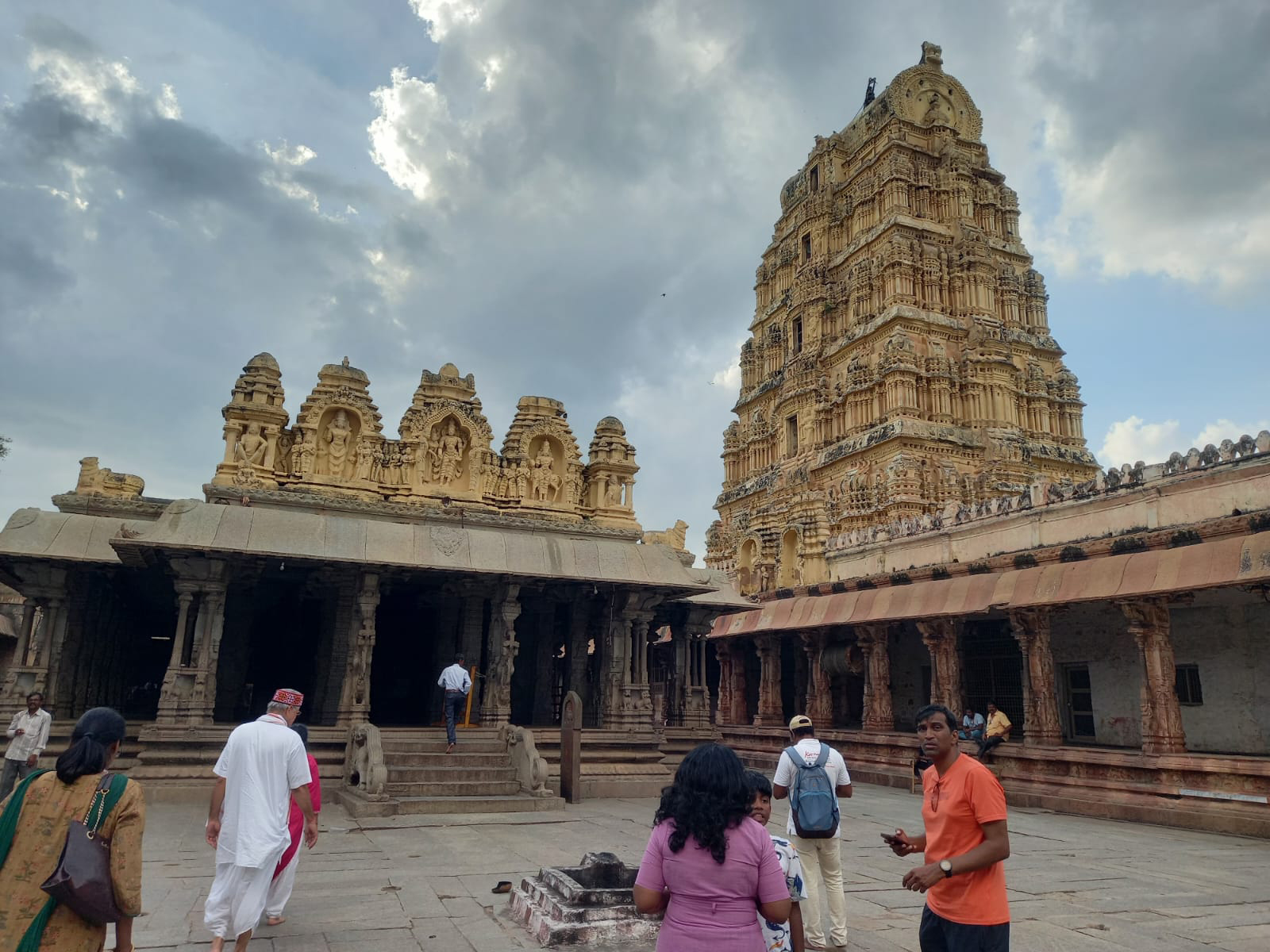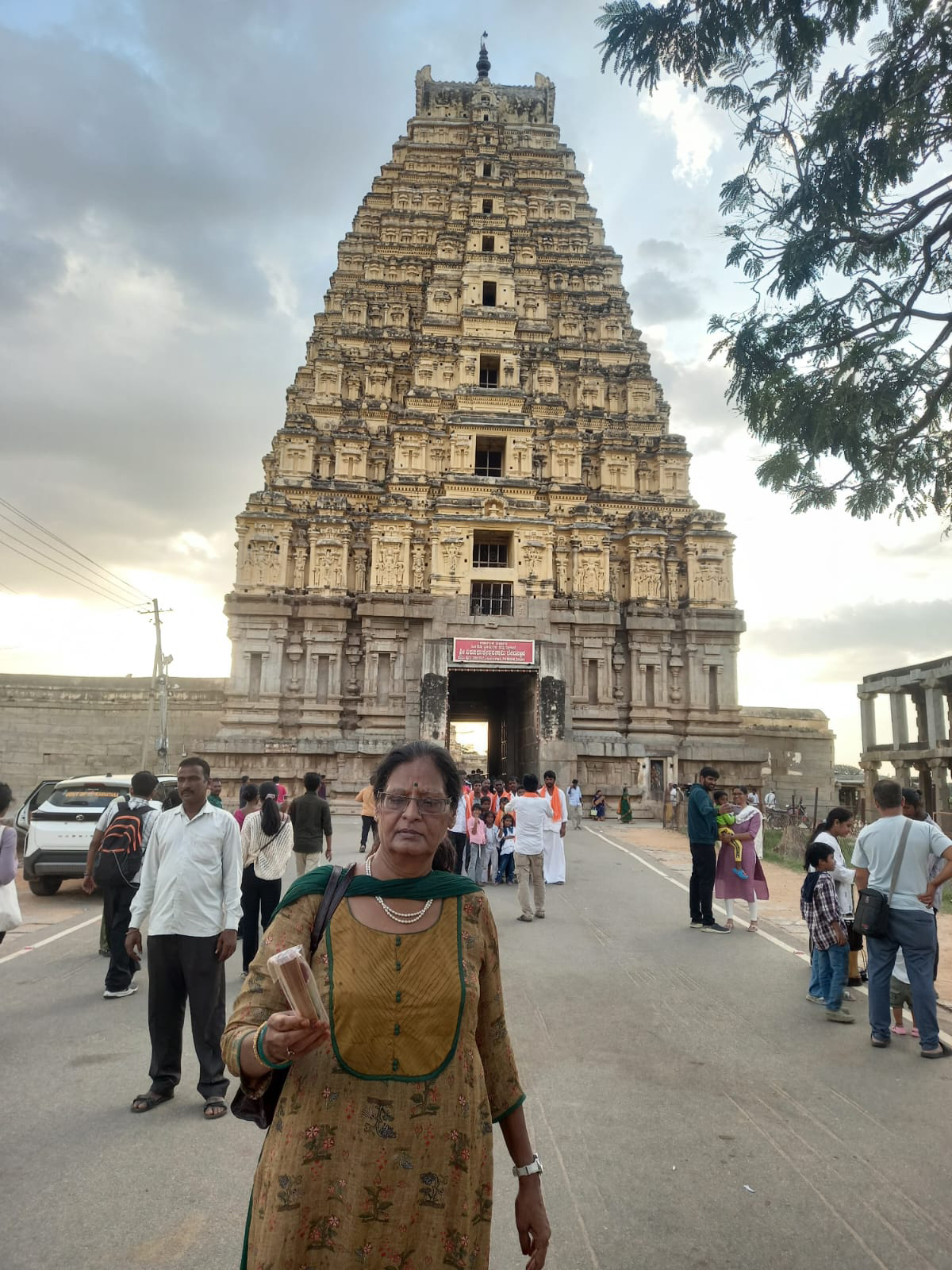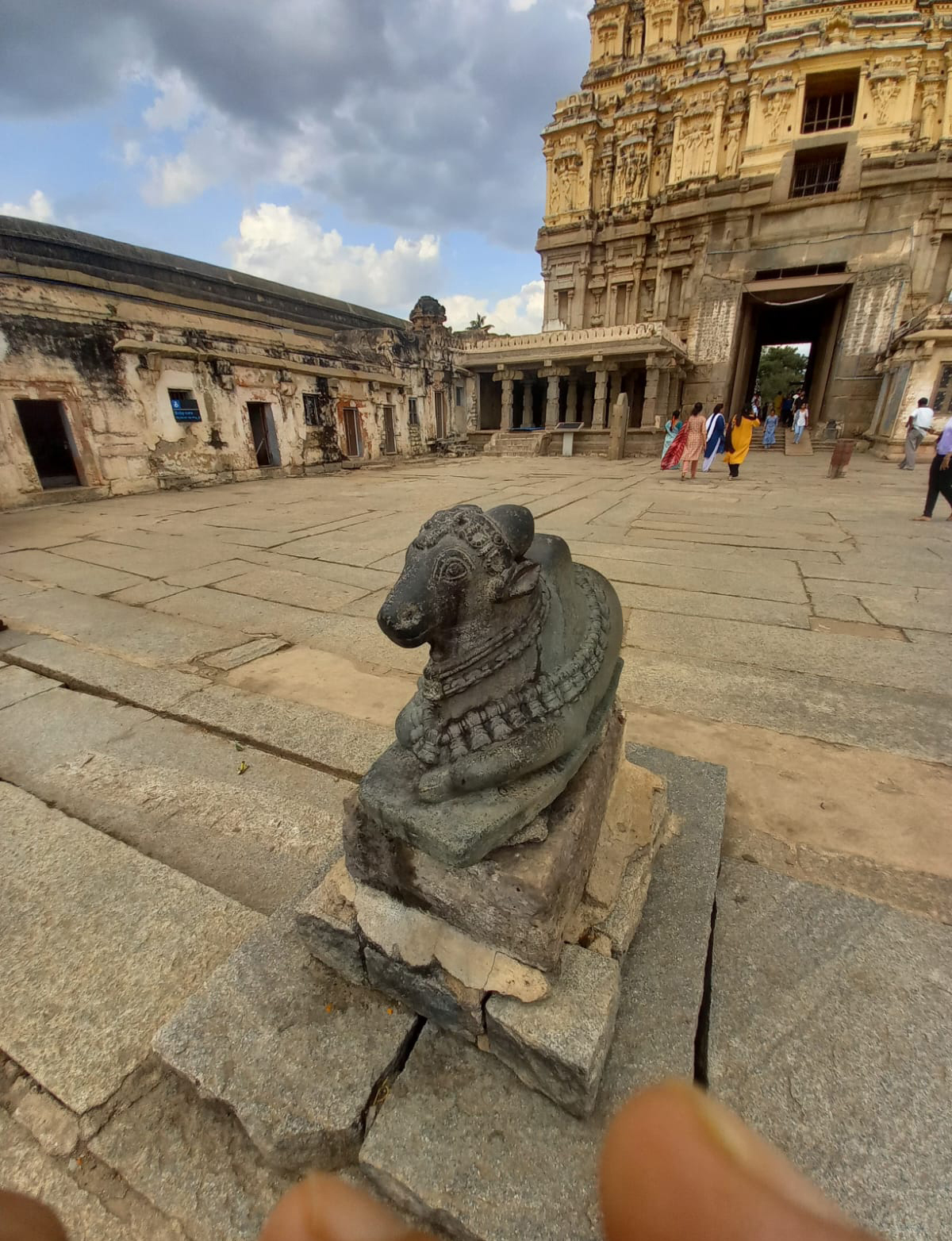


Virupaksha temple
The Virupaksha temple is the oldest one of the 116 Temples in
Hampi. It is the first destination for pilgrims and tourists, and remains a
Hindu worship site even today. Parts of the Shiva, Pampa and Durga temples
existed in the 11th-century; it was extended during the Vijayanagara Empire era. The
temple is a collection of smaller temples, a regularly repainted, 50-metre
high gopuram, a Hindu monastery dedicated to Vidyaranya of Advaita
Vedanta tradition.
The temple faces eastwards, aligning the sanctums of the Shiva
and Pampa Devi temples to the sunrise; a large gopuram marks its entrance. The
gopuram leads into a rectangular court that ends in another, smaller gopuram
dated to 1510 CE. To its south side is a 100-column hall with Gods and deities related
reliefs on all four sides of each pillar. Connected to this public hall is
a community kitchen, a feature found in other major Hampi temples. A channel is
cut into the rock to deliver water to the kitchen and the feeding hall. The
courtyard after the small gopuram has dipa-stambha (lamp pillar) and Nandi.
The courtyard after the small gopuram leads to the main mandapa
of the Shiva temple, which consists of the original square mandapa and a
rectangular extension composed of sixteen piers built by Krishnadevaraya. The
ceiling of the open hall above the mandapa is painted, showing the Shaivism
legend relating to Shiva-Parvati marriage; another section shows the legend of
Rama-Sita of the Vaishnavism tradition. A third section depicts the legend
of the love god Kama shooting an arrow at Shiva to get him interested in
Parvati, and the fourth section shows the Advaita Hindu scholar Vidyaranya
being carried in a procession.
The sanctum of the temple has a Shiva linga with a
face embossed with brass. The compound has a northern gopura, smaller
than the eastern gopura, that opens to the Manmatha (Kamdev) tank and a pathway
to the river with stone reliefs related to the Ramayana. To the west of this tank are shrines of Shaktism
and Vaishnavism traditions, such as those for Durga and Vishnu
respectively.
According to local tradition, the Virupaksha is the only temple
that continued to be a gathering place of Hindus and frequented by pilgrims
after the destruction of Hampi in 1565. The temple attracts large crowds; an
annual mela with a chariot procession to mark the marriage of
Virupaksha and Pampa is held in spring, as is the solemn festival of Maha
Shivratri.

.jpg)
.jpg)

.jpeg)






